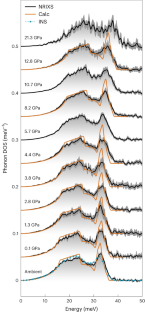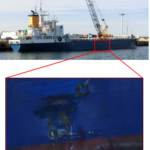2023-07-27 カリフォルニア工科大学(Caltech)
◆この研究は、精密な機器の部品などで重要な役割を果たす合金に関する新たな理解をもたらすものであり、磁気冷却材料の開発にも応用される可能性があるとされています。
<関連情報>
- https://www.caltech.edu/about/news/some-alloys-dont-change-size-when-heated-we-now-know-why
- https://www.nature.com/articles/s41567-023-02142-z
インバー効果の熱力学的説明 A thermodynamic explanation of the Invar effect
S. H. Lohaus,M. Heine,P. Guzman,C. M. Bernal-Choban,C. N. Saunders,G. Shen,O. Hellman,D. Broido & B. Fultz
Nature Physics Published:27 July 2023
DOI:https://doi.org/10.1038/s41567-023-02142-z

Abstract
The anomalously low thermal expansion of Fe–Ni Invar has long been associated with magnetism, but to date, the microscopic underpinnings of the Invar behaviour have eluded both theory and experiment. Here we present nuclear resonant X-ray scattering measurements of the phonon and magnetic entropies under pressure. By applying a thermodynamic Maxwell relation to these data, we obtain the separate phonon and magnetic contributions to thermal expansion. We find that the Invar behaviour stems from a competition between phonons and spins. In particular, the phonon contribution to thermal expansion cancels the magnetic contribution over the 0–3 GPa pressure range of Invar behaviour. At pressures above 3 GPa, the cancellation is lost, but our analysis reproduces the positive thermal expansion measured separately by synchrotron X-ray diffractometry. Ab initio calculations informed by experimental data show that spin–phonon interactions improve the accuracy of this cancellation over the range of Invar behaviour. Spin–phonon interactions also explain how different phonon modes have different energy shifts with pressure.



